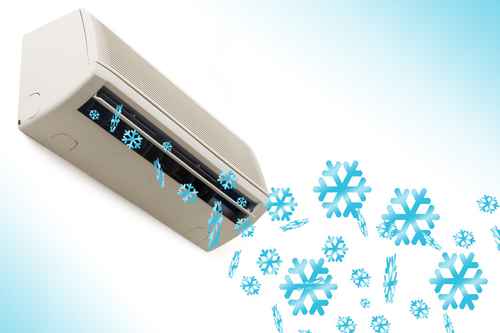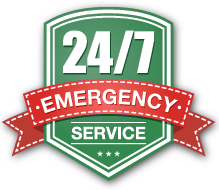
A2L refrigerants are an eco-friendly alternative in HVAC systems due to their lower global warming potential and mild flammability. This article explains what A2L refrigerants are, their benefits, and the industry’s shift to them, driven by new regulations surrounding their usage.
Understanding A2L Refrigerants
A2L refrigerants are gaining prominence in the HVAC industry due to their unique characteristics and environmental benefits. Unlike the traditionally used R-410A, A2L refrigerants offer a lower global warming potential, making them a more sustainable choice for air conditioning and commercial refrigeration systems. This shift is about complying with regulations and embracing a more eco-friendly approach to refrigeration.
Appreciating the significance of this transition involves understanding what sets A2L refrigerants apart. Unique properties and environmental advantages drive their adoption in applications ranging from variable refrigerant flow systems to commercial refrigeration systems.
The Environmental Benefits of A2L Refrigerants
The environmental benefits of A2L refrigerants are a major driving force behind their adoption. With their lower global warming potential, these refrigerants significantly reduce greenhouse gas emissions, supporting global climate initiatives like the Montreal Protocol. Mitigating the environmental impact of HVAC systems through this transition is a crucial step toward a sustainable future.
A2L refrigerants also contribute to energy efficiency, which is vital for environmental and economic reasons. Their use in variable refrigerant flow systems and other HVAC applications can lead to lower energy consumption and reduced operational costs, making them attractive for businesses looking to enhance their environmental credentials while achieving cost savings.
Regulatory Landscape for A2L Refrigerants
The regulatory landscape for A2L refrigerants is evolving rapidly, with significant implications for the HVAC industry. The American Innovation and Manufacturing Act of 2020 and other global agreements like the Montreal Protocol and Kigali Amendment drive the transition to lower GWP refrigerants. These regulations aim to phase out high GWP refrigerants and promote more sustainable alternatives.
The HVAC industry is poised to adopt A2L refrigerants extensively in the coming years, driven by these regulatory changes and the need to meet environmental goals. The following subsections discuss key regulations, compliance deadlines, and phasedown schedules critical for planning and implementation.
Key Regulations You Need to Know
The AIM Act of 2020 is crucial in mandating the transition away from high GWP refrigerants that use HFCs. This transition is essential for reducing the environmental impact of HVAC systems and ensuring compliance with global climate agreements. Technicians must have EPA 608 certification and complete an A2L certification course for A2L equipment, highlighting the importance of proper training and compliance.
In addition to the AIM Act, the adoption of hydrofluoroolefins (HFOs) in commercial refrigeration systems is driven by their lower global warming potential and reduced impact on climate change. These regulations highlight the need for industry professionals to stay informed and prepared for the upcoming changes.
Compliance Deadlines and Phasedown Schedules
The phasedown schedule for HFC refrigerants and the introduction of A2L refrigerants come with specific compliance deadlines. By January 1, 2025, new residential and light commercial air conditioning units must exclusively use A2L refrigerants. By January 1, 2026, Variable Refrigerant Flow (VRF) systems must shift to low GWP refrigerants. Compliance with new regulations necessitates this change.
Starting January 1, 2025, packaged rooftop units will have a GWP threshold set at 700. Equipment manufactured before this date can still be installed until January 1, 2026, providing a transition period for businesses to adapt.
These phasedown schedules underscore proactive planning and compliance to meet new environmental standards.
Transitioning to A2L Refrigerants
Transitioning to A2L refrigerants requires careful planning and execution. Businesses should assess their current systems and prepare for necessary changes to accommodate these new refrigerants. This transition is about replacing old refrigerants and embracing new technologies and practices that enhance efficiency and sustainability.
A2L refrigerants, classified as mildly flammable but non-toxic, present unique challenges and opportunities. The following subsections will explore how to upgrade existing equipment and select new equipment designed for A2L refrigerants, ensuring a smooth and compliant transition.
Upgrading Existing Equipment
Upgrading existing HVAC equipment to use A2L refrigerants involves several best practices. Firstly, systems should be purged with inert gas and subjected to thorough leak testing. This ensures the transition is safe and the new refrigerant operates efficiently within the system.
However, legacy A1 refrigeration systems cannot be retrofitted for A2L refrigerants due to safety concerns. Therefore, businesses may need to invest in new equipment specifically designed for A2L refrigerants to comply with upcoming regulations.
Selecting New Equipment
Selecting new HVAC equipment requires choosing systems designed for compatibility with A2L refrigerants. These new systems must meet updated safety and performance standards that account for the flammability and environmental benefits of A2L refrigerants. New HVAC units, such as those utilizing R-454B, are already available on the market, ensuring compliance with the 2025 transition deadline.
Choosing the right equipment involves considering safety features, system components, and overall performance. Businesses should prioritize equipment that offers energy efficiency and reduced environmental impact, aligning with the broader goals of the refrigerant transition.
Preparing for Future Changes
Preparing for future changes in the HVAC industry goes beyond transitioning to new refrigerants. It’s about adopting a proactive approach to innovation and sustainability. A2L refrigerants replace older, high-impact refrigerants like HFCs and HCFCs and enhance system efficiency, lowering emissions through reduced energy consumption.
As A2L refrigerants become more prevalent, businesses must stay ahead by investing in new technologies and practices supporting this transition. This preparation will ensure that they are future-proof and capable of meeting evolving environmental and regulatory standards.
Contact Albuquerque Plumbing, Heating & Cooling Today!
In summary, transitioning to A2L refrigerants is a critical step toward a more sustainable and compliant HVAC industry. A2L refrigerants offer unique properties, environmental benefits, and a regulatory framework that supports their adoption. We understand that these kinds of things come as a surprise, and we’re here to help. These changes really do benefit the environment and make you and your family safer while doing so.
So, if you’re wondering about how this change affects you, then please don’t hesitate to contact our team of HVAC professionals. Albuquerque Plumbing, Heating & Cooling is standing by to help with all your A2L transition needs! We offer compliant HVAC systems, and are here to help any way we can. Call us at [phoneNumber] today!
If you’re looking for fast and reliable furnace services, then check out our services in the following locations:
- Albuquerque air conditioning & cooling
- Corrales air conditioning & cooling
- Los Ranchos air conditioning & cooling
- Placitas air conditioning & cooling
- Rio Rancho air conditioning & cooling
- Bosque Farms air conditioning & cooling
Looking for help with your Tampa plumbing? Well, then check out the services offered by our friends over at ACS Home Services! They offer everything from HVAC to plumbing and even electrical. Look them up in the following locations today:
- ACS Home Services AC Repair Clearwater
- ACS Home Services – AC Repair Sarasota
- ACS Home Services AC Repair Tampa
Frequently Asked Questions
What makes A2L refrigerants unique compared to other refrigerants?
A2L refrigerants are distinctive due to their mild flammability and low toxicity, which contribute to their safety and environmental advantages over high-global warming-potential refrigerants such as R-410A.
What are the key regulations driving the transition to A2L refrigerants?
The key regulations driving the transition to A2L refrigerants are the AIM Act of 2020, the Montreal Protocol, and the Kigali Amendment. All of these regulations require the adoption of refrigerants with lower global warming potential and emphasize the urgent need for environmentally friendly refrigerant solutions.
When do the compliance deadlines for A2L refrigerants come into effect?
The compliance deadlines for A2L refrigerants are set for January 1, 2025, for new residential and light commercial air conditioning units and January 1, 2026, for VRF systems. It is imperative to plan accordingly to meet these upcoming requirements.
Can existing HVAC equipment be upgraded to use A2L refrigerants?
In some cases, existing HVAC equipment may be upgraded to use A2L refrigerants, but legacy A1 systems cannot be retrofitted due to safety concerns. Proper practices such as purging and leak testing are essential for those that can be upgraded.
What should businesses consider when selecting new HVAC equipment for A2L refrigerants?
Businesses must prioritize selecting HVAC systems designed explicitly for A2L refrigerants to ensure compatibility and adherence to the latest safety and performance standards. This focus will enhance operational efficiency and safety in their facilities.



